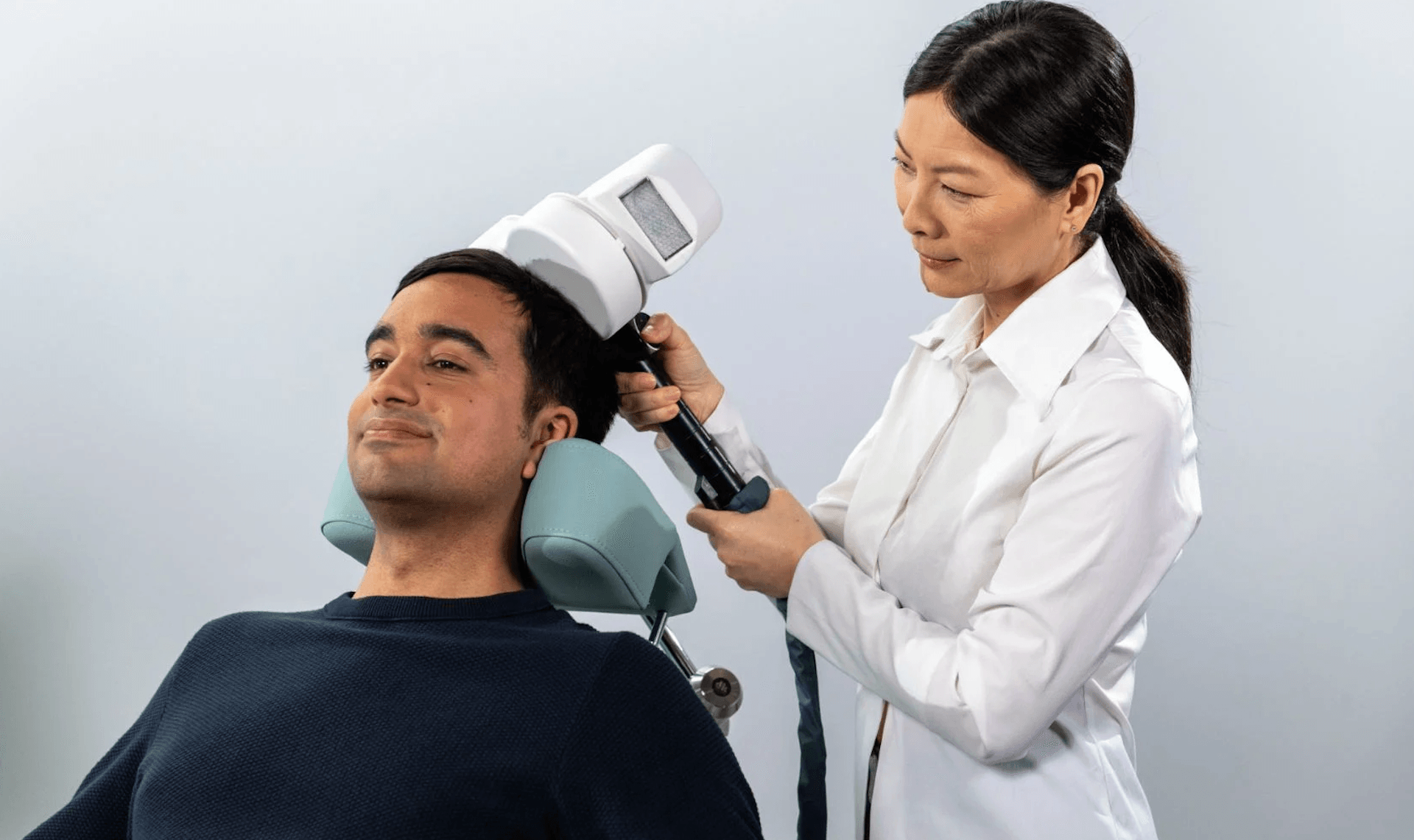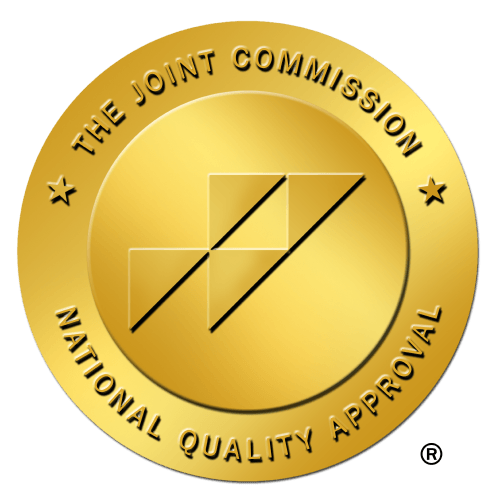TMS Therapy for Autism Exploring the Possibilities


Explore the potential of TMS therapy for autism and find the best TMS therapy near you. Learn how it may enhance cognitive and social skills.
Dealing with autism involves exploring new and effective treatments that can enhance quality of life. Transcranial magnetic stimulation (TMS), renowned for its efficacy in mental health, also holds potential for managing autism spectrum disorders. This innovative treatment employs targeted magnetic pulses to activate brain regions, possibly improving the neural pathways essential for individuals with autism.
If you or someone you care about is seeking effective therapies, finding the best TMS therapy near you could offer a new avenue of hope. In this article, we will examine the potential benefits of TMS for autism and what current research indicates about its effectiveness.
What Is TMS Therapy?

Transcranial magnetic stimulation (TMS) is a non-invasive medical procedure that involves the use of magnetic fields to stimulate nerve cells in the brain. It's primarily used to treat depression and other mental health disorders where patients do not respond well to medications. TMS therapy involves placing an electromagnetic coil near the forehead, specifically over the prefrontal cortex, which is the region of the brain associated with mood regulation.
During a TMS session, the electromagnetic coil generates brief magnetic pulses, which pass through the skull and induce small electrical currents that activate neurons within the target area. This stimulation is believed to improve symptoms of depression by enhancing the function of neurotransmitters and increasing blood flow in the brain.
TMS has been FDA-approved for the treatment of major depressive disorder since 2008 and has also been explored for its potential in treating a variety of other conditions, including anxiety, obsessive-compulsive disorder, and chronic pain. The procedure is typically administered daily over four to six weeks, and each session lasts about 30 to 60 minutes.
One of the key advantages of TMS is its safety profile; it generally causes few side effects, the most common being mild headache or discomfort at the site of stimulation. Unlike many other forms of depression therapy, TMS does not require sedation, does not cause systemic side effects, and does not require any recovery time, allowing patients to return to their normal activities immediately after treatment.
Exploring TMS Therapy for Autism

Exploring the use of transcranial magnetic stimulation (TMS) for autism opens up new possibilities in treating a condition characterized by diverse neurological differences. The potential benefits of TMS for autism stem from its ability to modulate neural activity, which could positively impact communication pathways, sensory processing, and behavioral responses that are often challenges for individuals with autism.
Potential Benefits of TMS for Autism
TMS has shown promise in influencing neural plasticity—the brain's ability to change and adapt—which is crucial in managing autism. By targeting specific areas of the brain associated with social cognition and communication, TMS might help improve the core symptoms of autism, such as difficulties with social interactions, repetitive behaviors, and verbal and non-verbal communication.
Furthermore, TMS could potentially reduce some of the sensory sensitivities experienced by individuals with autism. These sensitivities can include an overreaction to sensory stimuli like sounds, lights, or touch, which can be overwhelming. Modulating the brain's response to these stimuli through TMS may provide relief and help individuals manage their daily activities more effectively.
Current Research and Preliminary Findings
Research into the application of TMS for autism is still in its early stages, but preliminary findings are encouraging. Some small-scale studies have reported improvements in irritability, repetitive behaviors, and social withdrawal following TMS sessions. For example, a study found that low-frequency TMS helped decrease irritability and repetitive behaviors in children with autism, suggesting that TMS could be a complementary treatment to traditional behavioral therapies.
It's important to note that while these results are promising, TMS therapy for autism is not yet widely recognized as a standard treatment. Ongoing clinical trials and further studies are needed to fully understand the effectiveness and long-term benefits of TMS in this area. These studies will help determine optimal treatment protocols, including the frequency and intensity of magnetic pulses, to maximize benefits for individuals with autism.
In summary, TMS therapy represents a novel and exciting avenue for potentially enhancing the quality of life for those with autism by addressing some of the core and associated symptoms of the disorder. As research progresses, it could pave the way for incorporating TMS into broader autism treatment strategies.
Are You Struggling with Mental Health or Addiction?
We Can Help. Call Us Now!
CALL: 877-839-1772
Comparative Analysis with Other Treatments

When evaluating the potential of transcranial magnetic stimulation (TMS) for autism, it's useful to compare it with other prevalent treatments in terms of effectiveness, safety, and accessibility. These treatments typically include behavioral therapies, pharmacological solutions, and dietary interventions.
Effectiveness
Behavioral Therapies: Behavioral interventions, such as Applied Behavior Analysis (ABA), are the gold standard for treating autism. They have a robust body of evidence supporting their effectiveness in improving communication skills, social behaviors, and learning.
Pharmacological Treatments: Medications are often used to manage specific symptoms associated with autism, such as irritability, aggression, and anxiety. While these can be effective for symptom management, they do not address the core symptoms of autism and can have significant side effects.
TMS: Early research into TMS suggests it could modify neural activity that affects core and associated symptoms of autism, such as repetitive behaviors and difficulties with social interactions. However, the evidence base is not as extensive as that for behavioral therapies, and more research is needed to establish its effectiveness conclusively.
Safety
Behavioral Therapies: These are generally very safe, involving structured interventions without physical side effects. The main risk involves the potential for the therapy not to be effective for all individuals.
Pharmacological Treatments: Medications can cause various side effects, ranging from mild (like drowsiness) to severe (like weight gain or metabolic changes). The long-term impact of these medications, especially on children’s developing brains, is also a concern.
TMS: TMS is considered safe when performed under professional supervision. The most common side effects are temporary discomfort at the treatment site or mild headaches. TMS does not involve sedation or medication, making it a non-invasive option with minimal systemic side effects.
Accessibility
Behavioral Therapies: These therapies are widely available but can be time-intensive and require significant commitment from families. They can also be expensive, depending on the frequency of sessions and whether they are covered by insurance.
Pharmacological Treatments: Medications are generally accessible and often covered by insurance, making them a convenient option for many families. However, finding the right medication and dosage can be a lengthy trial-and-error process.
TMS: Currently, the availability of TMS is limited compared to more established autism treatments. It tends to be offered in specialized clinics and may not be covered by insurance for autism, making it less accessible for many families.
In conclusion, while TMS shows promise as a safe and innovative treatment, its place in autism therapy is still being defined. It offers a potentially effective treatment with minimal side effects but lacks the accessibility and established track record of behavioral therapies and pharmacological treatments. Further research and development could help in understanding where TMS stands in relation to other autism treatments in terms of efficacy, safety, and practicality for wider use.
Challenges and Considerations
While transcranial magnetic stimulation (TMS) offers a promising avenue for treating autism, particularly for those seeking the best TMS therapy near them, there are several challenges and considerations that need to be addressed.
Potential Risks
Neurological Effects: Although TMS is generally safe, the long-term effects on the developing brains of children with autism are not fully understood. The brain's plasticity in children is greater than in adults, which could potentially make them more susceptible to changes induced by magnetic stimulation. It's crucial to monitor these effects carefully in clinical trials to ensure safety.
Physical Discomfort: Some individuals may experience discomfort during the procedure, including headaches or scalp discomfort due to the electromagnetic coil. Although rare, there is also a slight risk of seizures, which necessitates careful screening and monitoring by experienced clinicians.
Variability in Response: As with many treatments for autism, individuals may respond differently to TMS. What works for one person might not work for another, and determining the likelihood of a positive response can be challenging. This variability can make it difficult to standardize treatment protocols and predict outcomes.
Practical Considerations
Cost and Accessibility: TMS can be expensive, and because it is still considered experimental for treating autism, insurance companies may not cover the cost. This can make access to the best TMS therapy near you difficult for many families who might benefit from this treatment.
Treatment Duration and Intensity: TMS requires regular sessions over a period of weeks, which might be demanding for some individuals, especially children, who may find it difficult to stay still during the procedure. The commitment to multiple weekly sessions can also be a logistical challenge for families.
Limited Research: There is limited research specifically focusing on the use of TMS for autism, which means there are still many unanswered questions about the optimal parameters for treatment, such as frequency and intensity of stimulation, and how these parameters differ based on individual neurological profiles.
Are You Struggling with Mental Health or Addiction?
We Can Help. Call Us Now!
CALL: 877-839-1772
TMS Therapy for Autism: A New Frontier in Treatment
The exploration of transcranial magnetic stimulation (TMS) in treating autism showcases its potential to significantly enhance the quality of life for individuals facing this condition. While the current research presents promising outcomes, it is imperative to continue rigorous studies and discussions to fully understand and refine this innovative therapy.
At The Forge Recovery Center, we are dedicated to helping you navigate the complexities of treatment options, including TMS. If you're seeking support or more information about how these therapies can aid in recovery, we're here to assist you every step of the way. Let's continue to push the boundaries of what's possible in autism treatment together.
Are You Struggling with Mental Health or Addiction?
We Can Help. Call Us Now!
CALL: 877-839-1772





